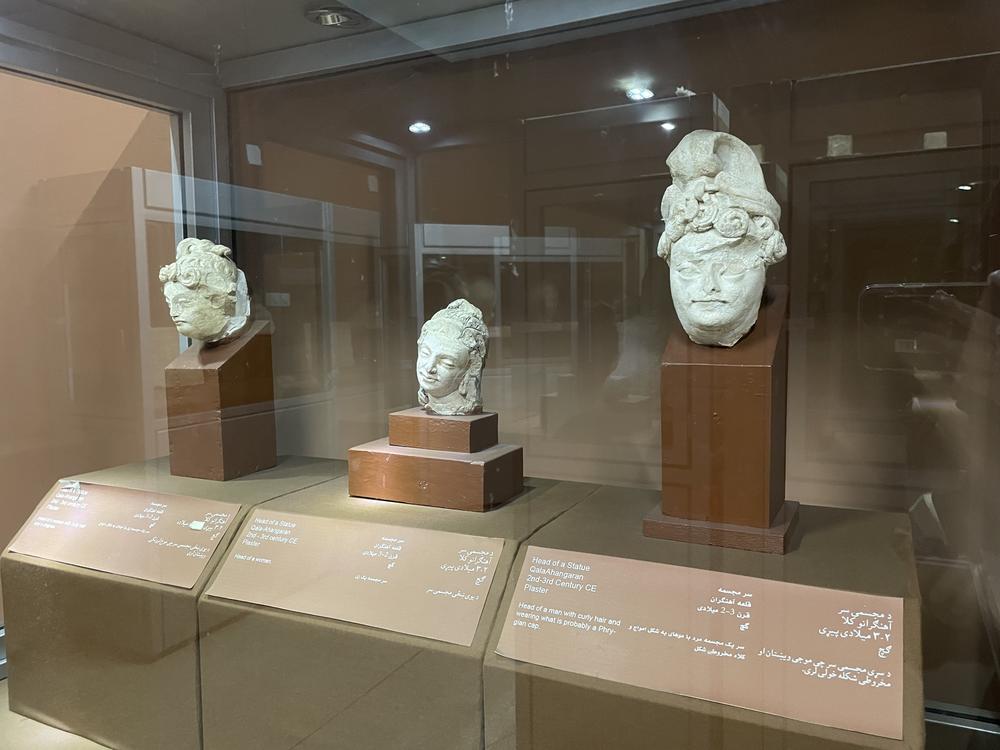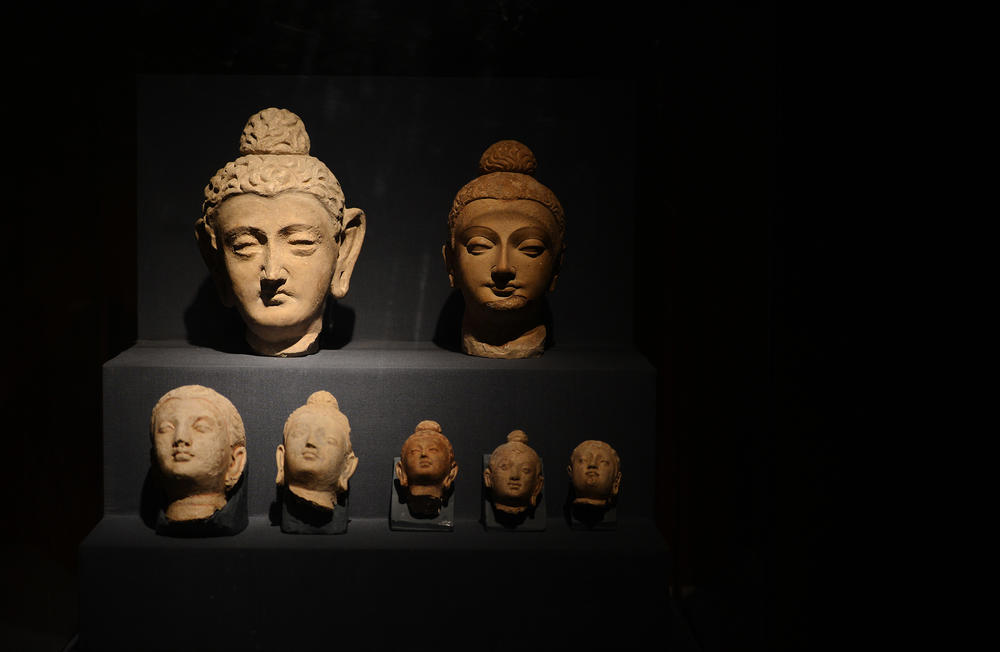Section Branding
Header Content
The Taliban now guard Afghanistan's National Museum, where they once smashed objects
Primary Content
KABUL — One of the most striking sights at the National Museum of Afghanistan these days isn't inside the museum, but by its front gates.
Young, armed Taliban guards protect the entrance, searching visitors before they enter the museum grounds.
The last time the Taliban were in power, at the direction of then-leader Mullah Muhammad Omar, they smashed ancient statues and other objects in this museum that they deemed un-Islamic and idolatrous.
That was in 2001 — the same year the Taliban also blew up two ancient, colossal Buddha statues carved into a cliffside in the city of Bamiyan. By the end of that year, the Taliban were toppled.
And so when they returned to power a year ago, many cultural heritage advocates worried about the fate of the museum and its irreplaceable treasures.
"The National Museum of Afghanistan was, once upon a time, the finest museum in Central Asia, and that is not an exaggeration," says Laura Tedesco, a cultural heritage and preservation specialist with the State Department who has worked with Afghan museum staff over the years.
She recalls visiting when the galleries were full of prehistoric figurines, ancient Buddhist artifacts and life-size human figure statues — all of it capturing the country's diverse blend of cultures over millennia.
"The artifacts on display were exquisite and Louvre-worthy in their quality," says Tedesco. "The diversity of culture evidenced in those artifacts is unique to Afghanistan because it was this cultural crossroads, and armies and thinkers and religions and influencers crisscrossed [it]."
Changes at the museum
After the Taliban seized control of the capital last August, the museum closed. Museum staff and others were uncertain the group would honor its pledge months earlier to protect the country's cultural heritage and prevent the looting of ancient artifacts.
When the museum eventually reopened in December, it was a hopeful sign to cultural heritage advocates that things might be different this time under Taliban rule.
The museum used to draw an array of visitors, from foreign dignitaries to busloads of schoolchildren. Now, with Afghanistan's economy in ruins, few seem to come by anymore. In a recent two-hour visit to the museum, NPR encountered no other visitors.
A museum employee says things are going fine, and with the arrival of the Taliban, "there was no obstacle for our work. Everything is going as normal as it was before." NPR is not naming museum employees for their security.
In walking through the museum, NPR saw displays of centuries-old ceramic bowls glazed in vibrant greens and blues, and ancient urns with Quranic verses meticulously etched into the sides.
There are hoards of coins, some so gold they almost glow. One room features wooden totems from a remote part of Afghanistan, and old weapons embellished with intricate mother-of-pearl inlay.
A large sign in English on the third floor reads "Buddhist Heritage of Afghanistan." But there are only three small, plaster Buddhist heads on display, dating back to 2nd and 3rd centuries.
Much of the rest is labeled contemporary, including a marble coffee table with jasper inlay, and the year 2000 carved into it.
Another employee dismisses it all as "kids' art."
He points to a television. "We used to show a film about the Taliban's destruction of the Bamiyan Buddhas on that TV," he says — adding that it's been unplugged since last August.
Ideology isn't the only threat to Afghan cultural heritage
As the Taliban advanced toward Kabul last year, archeologist Gil Stein watched with great trepidation from afar. As the director of the Chicago Center for Cultural Heritage Preservation, he'd had conversations with museum staff over the years about emergency plans, including what to do in case the Taliban took over again.
"One of the first things that [museum staff] did was they took all of the early Buddhist art off display in the galleries, and they put it into the storerooms," says Stein. "The second thing is, they started to be very, very careful in their public communications."
So far, it's hard for experts to know what to make of the Taliban's pledge to protect cultural heritage. In more remote parts of the country, Stein and others worry about the security of less visible sites without the means to take precautions to protect objects.
And ideology may not be the only threat. Looting of ancient sites has caused destruction for decades. And in the case of the massive ancient Buddhist complex at Mes Aynak, about 25 miles south of Kabul, it sits atop a copper deposit believed to be one of the biggest in the world.
This archaeological site was already in danger due to proposed Chinese mining activity that was agreed under a previous Afghan administration. The mining stalled, but this week, the Taliban acting minister of mines and petroleum said officials are "working quickly" to revive and resume the project. For a cash-strapped Taliban government, the lure of business opportunities may overwhelm other considerations.
"One of the biggest risks to Afghan cultural heritage right now is not necessarily the Taliban blowing up or smashing statues, but rather out of the need for economic development, they simply are not going to care about the damage that might be done," says Stein. "It's a perfect storm of risks."
But he says there's reason for hope that heritage can be protected under the Taliban.
"It is possible," he says. "It would be a terrible mistake for the West to write them off completely. There is space to negotiate things. I think that's almost always true in Afghanistan, but we all have to be very cautious on it because, in so many domains, the Taliban have been violating their promises."
Under the Taliban, so far, it seems the museum is being spared the worst from its past. But it's also not clear that it can return to what it once was anytime soon.
Copyright 2022 NPR. To see more, visit https://www.npr.org.









